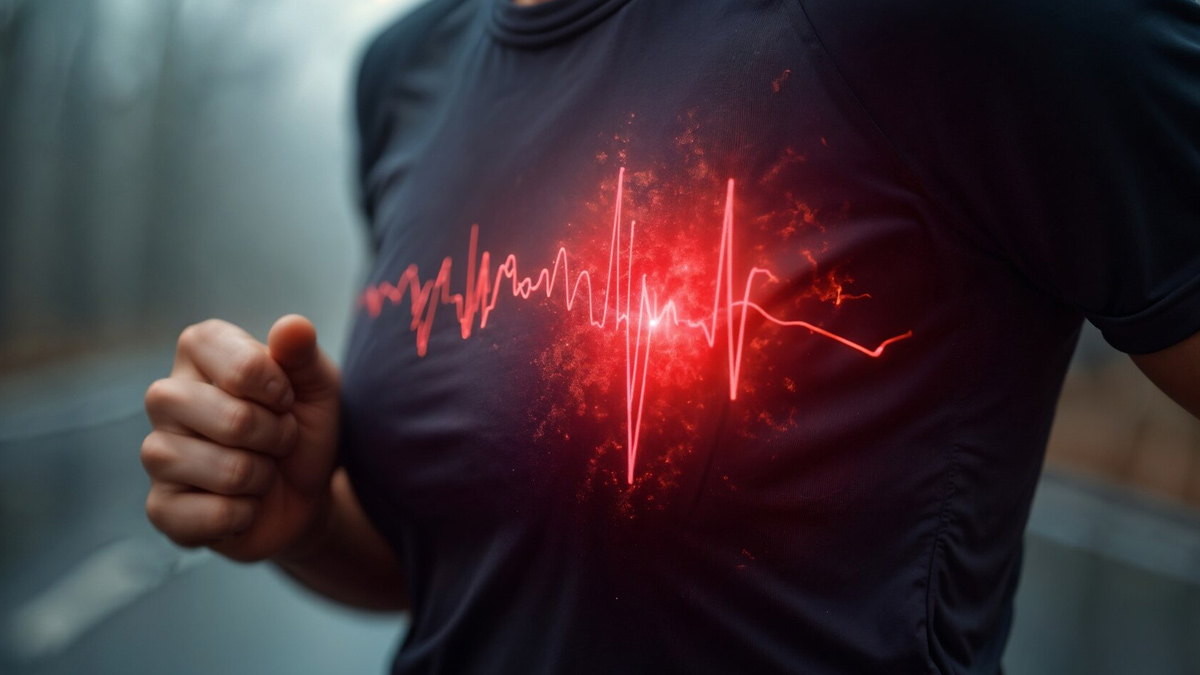
A chest pain, shortness of breath, and heart palpitations are all signs of a heart attack. However, interestingly, these symptoms can also indicate broken heart syndrome, also known as takotsubo cardiomyopathy. Both heart attack and broken heart syndrome can be life-threatening if not treated on time with proper medical support. While the two cause similar symptoms and the initial treatment can be similar, in the long run, they may require specialised care.
Table of Content:-
Therefore, it is extremely crucial to get an accurate diagnosis and seek proper support. In an interaction with the OnlyMyHealth team, Dr Parneesh Arora, Senior Director – Cardiac Sciences, Max Super Speciality Hospital, Patparganj, shares distinguishing factors between heart attack and broken heart syndrome.
Also Read: Are Heart Attacks Really More Likely To Happen On Mondays?
What Is A Heart Attack Vs. A Broken Heart Syndrome?

A heart attack, also known as a myocardial infarction, is a life-threatening condition that occurs when blood flow to a part of the heart muscle is suddenly blocked, depriving that particular area of oxygen.
On the other hand, broken heart syndrome, or Takotsubo cardiomyopathy, is usually triggered by intense emotional or physical stress, leading to a temporary weakening of the heart muscle. It may mimic symptoms of a heart attack; however, the differentiating factor is that broken heart syndrome occurs with no blocked arteries.
Dr Arora explains, "In a heart attack, heart muscle cells die due to lack of oxygen. In broken heart syndrome, the heart muscle is stunned but not permanently damaged, and it often recovers within days or weeks."
He adds that both conditions can cause chest pain, shortness of breath, and irregular heartbeats. However, broken heart syndrome often occurs after a significant emotional event, such as the loss of a loved one, while heart attacks can happen without such triggers.
How Does Emotional Stress Impact The Heart?

A 2017 study published in The Lancet, involving 293 adults, found that higher stress-related activity in the brain increased heart disease risk. Researchers used images of part of the brain involved with fear and stress and found links between stress and cardiovascular disease episodes, suggesting that emotional stressors can lead to Cardiovascular Disease (CVD).
Dr Arora notes that emotional stress can cause heart attack-like symptoms, as intense stress triggers the release of stress hormones like adrenaline, which can temporarily stun the heart muscle. This can lead to symptoms, such as chest pain, shortness of breath, and palpitations, which are the hallmark of broken heart syndrome.
He adds that chronic stress can also contribute to high blood pressure, inflammation, and other risk factors for heart disease, making emotional stress a significant factor in heart health.
Warning Signs Of A Heart Attack
Some of the warning signs of a heart attack include:
- Chest pain, pressure, and tightness
- Pain or discomfort that spreads to the shoulder, arm, back, neck, jaw, teeth or sometimes the upper belly
- Cold sweat
- Fatigue
- Heartburn or indigestion
- Lightheadedness or sudden dizziness
- Nausea
- Shortness of breath
Also Read: Expert Unveils Uncommon Symptoms of Clogged Arteries You Should Know
How To Diagnose And Treat Broken Heart Syndrome?

Diagnosis of broken heart syndrome often begins with a medical history review, where a recent emotional or physical stressor is commonly noted, says Dr Arora, adding that imaging tests such as an echocardiogram or MRI may reveal the characteristic ballooning of the heart's left ventricle.
Blood tests help rule out a heart attack by showing no significant elevation in cardiac enzymes. An angiogram is used to confirm that there are no blockages in the coronary arteries.
Treatment usually depends on the cause of the cardiovascular event. These include:
- Medications: Beta-blockers, ACE inhibitors, or diuretics may be prescribed to reduce heart strain and manage symptoms.
- Stress management: counselling, relaxation techniques, or therapy can help address emotional triggers.
- Monitoring: Most patients recover fully within weeks, but follow-up care is essential to monitor for potential complications.
Tips To Reduce Risk Of Heart Attack And Broken Heart Syndrome
To reduce the risk of a heart attack and broken heart syndrome, here are some common yet effective strategies to adopt:
- Practise relaxation techniques like meditation, yoga, or deep breathing to reduce emotional stress.
- Engage in moderate physical activity, such as walking or swimming, to improve heart health and reduce stress.
- Focus on fruits, vegetables, whole grains, lean proteins, and healthy fats while limiting processed foods, sugar, and saturated fats.
- Avoid smoking and excessive alcohol consumption, as they can damage the heart and increase stress on the body.
- Maintain a healthy weight, as obesity is a risk factor for both heart disease and stress-related conditions.
- Regularly monitor blood pressure, cholesterol, and blood sugar levels to catch and manage risk factors early.
- Build a strong support system that can help manage emotional stress and improve overall well-being.
Conclusion
Both heart attack and broken heart syndrome can cause similar symptoms, including chest pain, heart palpitations, and shortness of breath. However, the two are two separate conditions, and recognising them for what they are is crucial for proper care and treatment. While stress is a common trigger for both heart attack and broken heart syndrome, other factors may also contribute to an incidence of a heart attack. To understand the difference, it is best to consult a doctor, who can also assess your risk.
Also watch this video
How we keep this article up to date:
We work with experts and keep a close eye on the latest in health and wellness. Whenever there is a new research or helpful information, we update our articles with accurate and useful advice.
Current Version
